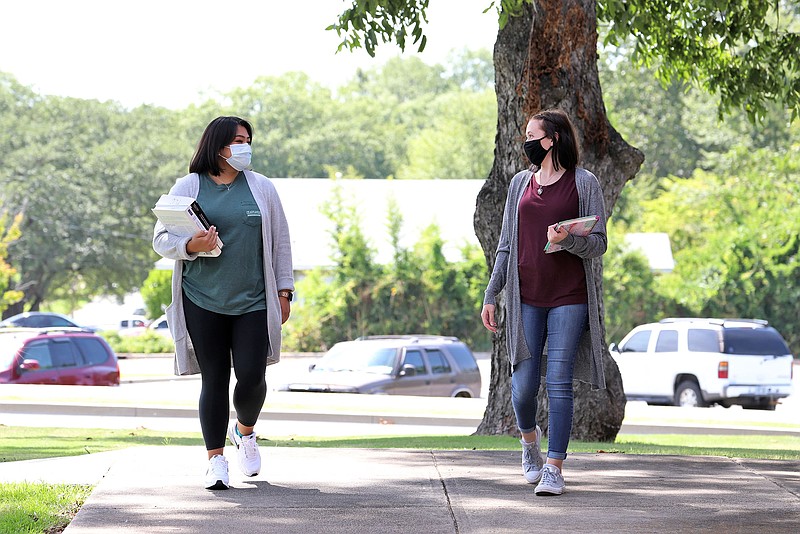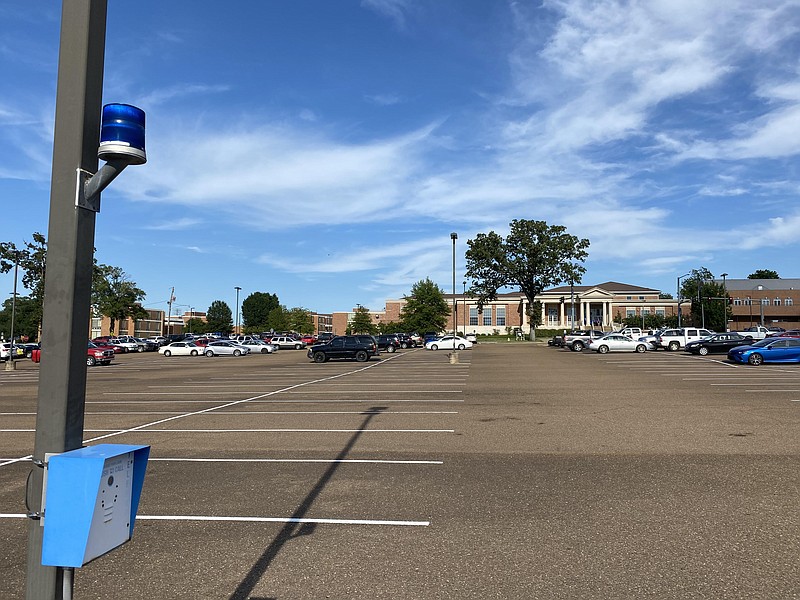A shooting incident that occurred on August 11 at Southern Arkansas University that resulted in one student’s death left many students and their parents shaken, with some complaining of a lack of communication from the University.
The shooting, which left junior physics major Joshua Keshun Smith dead, occurred around 1 a.m. August 11, and students were not notified until nearly 8 a.m.
“If anything, it felt more like an announcement than an emergency,” SAU junior William Anderson said, referring to the email SAU sent to its students at 7:50 a.m.
Parent Ginny Howard Shaw messaged the Banner-News, detailing that she had no clue anything happened until she received an email at 8:45 a.m.
“They said the campus was locked down immediately,” Shaw messaged. “Well, where was the notification order?”
Vice President of Student Affairs Dr. Donna Allen said the shooting event was an isolated incident consisting of a planned meeting between those involved, which also included a second SAU student who was transported Tuesday morning to the Magnolia Regional Medical Center and who was reportedly in stable condition that morning.
“The University believes it would have created more of a panic had it initiated a RAVE alert when it wasn’t necessary,” Allen said in an email to the Banner-News.
Emily Overton, a junior at SAU, noted that the shooting incident, which occurred in the parking lot of the Donald W. Reynolds Center on campus, was in close proximity to Talley Hall, an SAU residence hall.
“They (the Talley Hall residents) are literally right there; they could probably see what was going on from the windows,” she said.
“If it had been more of a threat, I don’t think any of us would have been prepared for that,” Overton added.
The Emergency Preparedness System page on the SAU website details the many different ways that SAU would be able to contact its students during an emergency.
According to the University’s website, the RAVE alert is utilized to notify students, faculty and staff via text messaging, phone, web and email in the event of an emergency. SAU also offers AlertXpress, a phone, fax and email mass notification system for parents and local community members.
The page also states that SAU utilizes an internal “Emergency” email system, and to further ensure that the university community can be reached in an emergency, there is an emergency broadcast alert system named Alertus Desktop, which activates a full-screen pop-up alert on all Microsoft Windows operating system computers on SAU’s network.

“The vast majority of the campus residents were sleeping in their residence halls while over half were asleep at their homes and at off-campus locations,” Allen said in her email. “Had we sent out a RAVE we would have had many trying to see what was going on when the situation was already over.”
The RAVE mobile alert system was launched by RAVE Mobile Safety originally to allow institutions of higher education to notify students of emergency situations; the company has since expanded their product line to include emergency alert systems for other types of institutions. Every public school in Arkansas, for example, is outfitted with a RAVE Panic Button, which allows teachers to instantly notify each other and first responders of active shooting situations on campus by pushing a button on their phones.
According to RAVE Mobile Safety’s web page on the RAVE alert system, emergency alerts can be sent with “three clicks” via text message, email, public address, social media and digital signage, among other platforms.
The University has also installed a campus-wide outdoor warning system that allows for broadcast messages and warning tones to alert the campus community of impending emergencies, according to SAU’s website.
“SAU and the University Police take the safety of our students very seriously and at any time had the University Police believed the students were in danger there would have been a RAVE alert initiated,” Allen said in her email to the Banner-News. “We do understand their concerns but the university police had knowledge that the students did not have.”
South Arkansas Community College President Dr. Bentley Wallace outlined the policy SouthArk has in place in the case of a violent on-campus incident such as SAU experienced. SouthArk is located in El Dorado, in neighboring Union County.
“We have an emergency operations plan, and that covers a variety of things that might happen; whether that’s an earthquake or fire or gas leak, severe weather, those sorts of things are all covered by that, as well as if there’s a crime in-progress near campus, because we’re an open campus … or a crime that’s happening on our campus,” Wallace said.
If students become aware of a crime in-progress on campus, they’re asked to immediately alert campus police, or, if they’re unable to do that, to call 911. The school uses an internally managed text and email alert system to notify students of anything that might be of concern, whether it be a school closure due to snow or an electricity outage, or near or on-campus crimes.
“The vast majority of students have signed up for that,” Wallace said. “If there was a chance of danger to students due to criminal activity, we can push that out through our emergency alert through texting, and then we’d immediately put that on our social media and then on our college website as well.”
Wallace noted that if a crime occurred on or near campus at a time when there were no students present, they would likely be notified later. He used the example of a crime occurring at night, and noted that SouthArk doesn’t have on-campus housing, so there are typically no students there during the nighttime hours once all classes have ended.
“A lot of on-campus crime, particularly violent crime, unfortunately happens around student housing, whether that’s on-campus student housing or apartments near campus; because we don’t have apartments or student housing, a lot of things you see there don’t happen here,” he said. “That’s one advantage of a two-year college is that we don’t see a lot of that.”
However, if gunfire were to be heard on or near campus while students were present — or if it was even suspected to have been heard — Wallace said students would be notified through the school’s alert system immediately.

“We would enact our protocols around an active shooter situation, and even if we weren’t 100% certain it was gunfire, we don’t want people to decide for themselves if it was or wasn’t gunfire,” Wallace said. “If that situation is going on, we’re going to notify everyone immediately.”
The school’s active shooter policy has been updated in recent years to follow best practices, Wallace said, which now call for any student that is able to safely evacuate themselves from the premises to do so, and for anyone who can’t to bunker down in the room they’re in and barricade the door. He said campus police, who are certified law enforcement officers, will respond immediately to any crimes in-progress, and local law enforcement will also be notified.
Investigations into crimes that occur on-campus start with campus police, Wallace said. If the incident requires further investigation or adjudication, it will be passed along to the El Dorado Police Department or the Union County Sheriff’s Office, he said.
“If it’s an event at night, sometimes the city police will be the first on the scene but the initial intake will always be our campus police,” Wallace said.
Luckily for SouthArk, and potentially related to their lack of student housing as Wallace said, as far as anyone there can remember, no violent crimes have been reported on-campus. He said all public colleges and universities are required to report crime statistics to the federal government annually in a detailed report.
“We’ve had a couple of burglaries and some vandalism,” he said. “I’m glad to say SouthArk has had some minor incidents that have had to be reported over the years and as far as anyone can remember no violent crimes.”
A follow up email sent to Allen with additional questions was not answered by press time Monday. The investigation into the shooting was ongoing as of Saturday, according to SAU.

